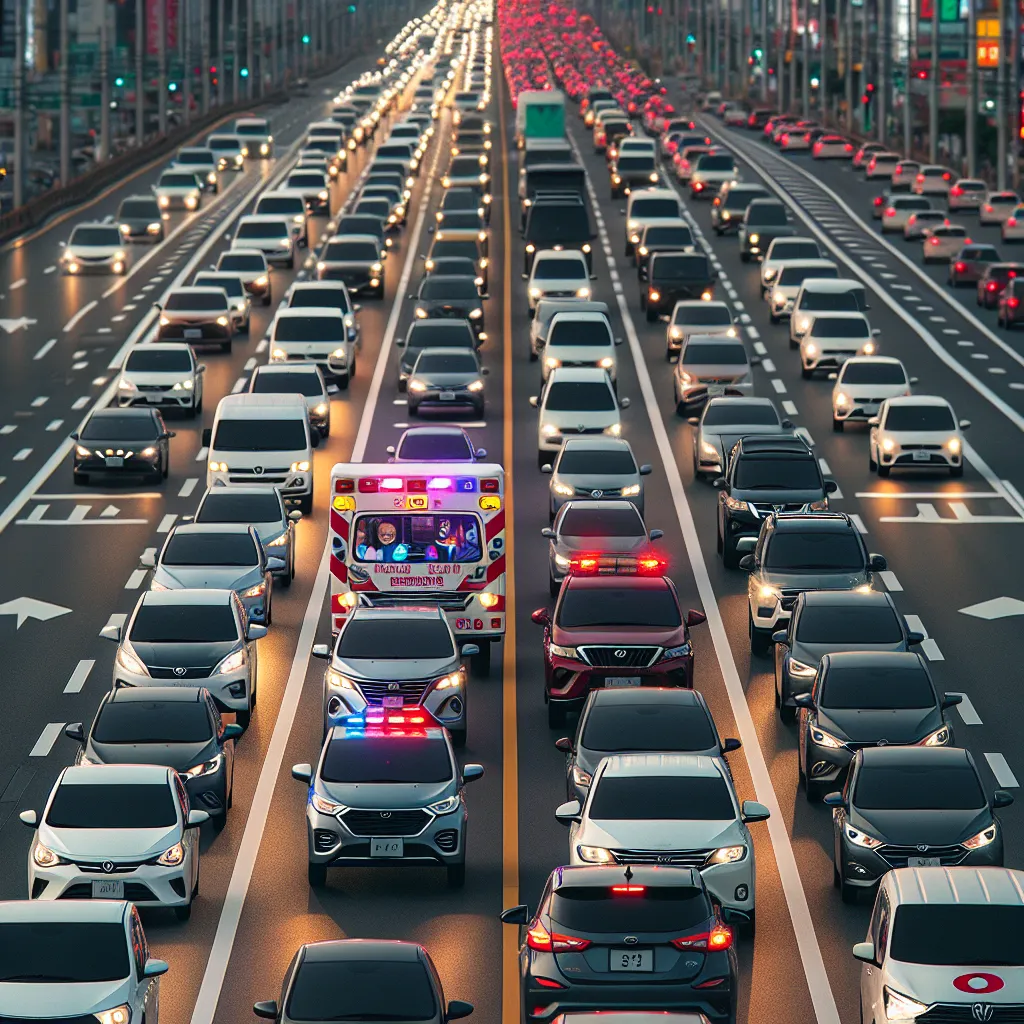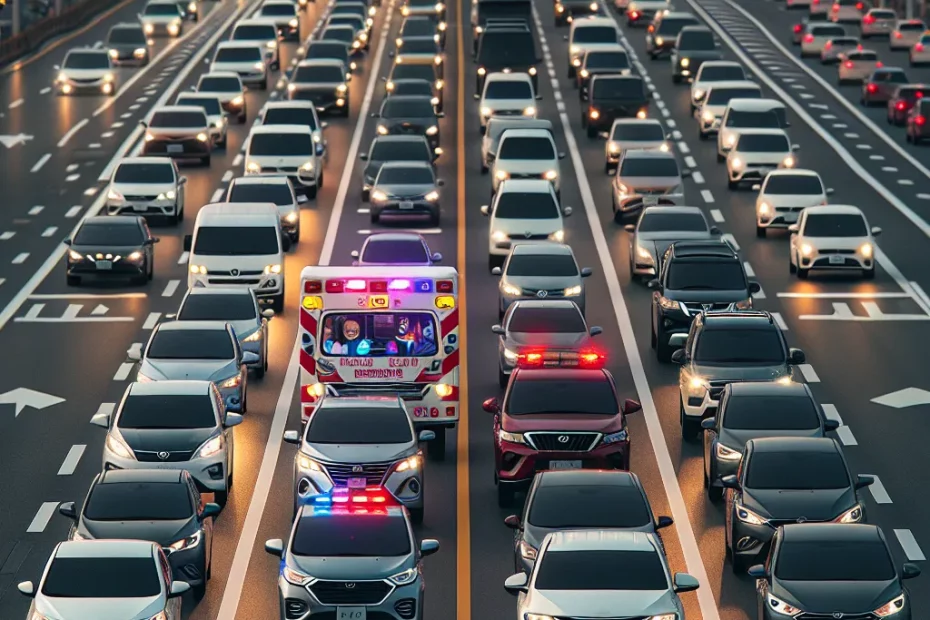As a responsible driver, understanding and following driving etiquette is crucial for safe and harmonious road usage. In Korea, where road culture plays a significant role in daily life, adhering to polite and courteous driving practices is not just a choice but a necessity. From respecting road signs and signals to giving way to emergency vehicles, each aspect of driving etiquette contributes to a smoother and more efficient traffic flow. By embracing these principles, drivers can not only ensure their safety but also contribute to a more civilized and respectful driving environment for everyone on the road. Let’s explore some essential tips for practicing polite and courteous driving in Korea.

Understanding Korean Road Signs and Signals
Welcome to a comprehensive guide on understanding Korean road signs and signals! Navigating the roads in Korea can be a challenging experience, especially for those unfamiliar with the local traffic rules and signage. In this post, we will delve into the various road signs and signals you may encounter while driving in Korea, providing you with valuable insights to ensure a safe and smooth journey. Let’s buckle up and explore the fascinating world of Korean road signage together! 🚗🚦
Categories of Road Signs in Korea
First and foremost, it is crucial to familiarize yourself with the different categories of road signs in Korea. These include regulatory signs, warning signs, and informational signs. Regulatory signs, such as speed limits and no entry signs, inform drivers of specific laws and regulations that must be followed. Warning signs, on the other hand, alert drivers to potential hazards ahead, such as sharp curves or pedestrian crossings. Informational signs provide drivers with useful information, such as directions to nearby facilities or landmarks.
When driving in Korea, pay close attention to traffic signals, as they play a vital role in regulating the flow of traffic. Red means stop, green means go, and yellow indicates that the light is about to change. Additionally, be mindful of pedestrian signals, which indicate when it is safe to cross the road. Remember, safety should always be your top priority when behind the wheel! 🚦⚠️
In Korea, there are also specific road signs that are unique to the country. For example, the “School Zone” sign alerts drivers to areas where children may be present, requiring extra caution. The “No Parking” sign indicates areas where parking is prohibited, helping to maintain order on the roads. By understanding and obeying these signs, you can contribute to a safer driving environment for everyone.
It is worth noting that some road signs in Korea may be written in Korean, so it is beneficial to familiarize yourself with basic Korean characters to interpret these signs accurately. Additionally, GPS navigation systems in Korea often provide English translations for road signs, offering further assistance to foreign drivers.
In conclusion, understanding Korean road signs and signals is essential for safe and courteous driving in Korea. By familiarizing yourself with the various signs and signals, you can navigate the roads with confidence and ensure a pleasant driving experience. Remember to always stay alert, follow the rules of the road, and respect other drivers. Safe travels! 🛣️🇰🇷
Giving Way to Emergency Vehicles
When it comes to driving etiquette, one of the most crucial aspects is giving way to emergency vehicles. In Korea, it is not just a matter of courtesy but a legal requirement to yield to ambulances, fire trucks, and police cars when their sirens and lights are on. Failure to do so can result in serious consequences, including fines and penalties.
The Importance of Giving Way
In a bustling city like Seoul, where traffic congestion is a common occurrence, every second counts for emergency vehicles trying to navigate through the busy streets to reach those in need. By promptly giving way to these vehicles, you are not only following the law but also potentially saving lives.
According to recent statistics, the average response time for emergency vehicles in Seoul is approximately 7 minutes. However, this time can significantly increase if drivers do not clear the way promptly. In fact, studies have shown that even a slight delay in traffic flow caused by vehicles not yielding to emergency vehicles can impact response times by up to 20%.
Imagine if it were your loved one in need of urgent medical attention or your property at risk of being engulfed in flames. Wouldn’t you want others to give way to emergency vehicles to ensure help arrives as quickly as possible? It is a collective responsibility to prioritize the safety and well-being of those in need during emergencies.
So, the next time you hear the blaring sirens and see the flashing lights of an ambulance, fire truck, or police car approaching from behind, remember to remain calm, check your surroundings, and safely maneuver your vehicle to the side to allow them to pass. Your quick and considerate actions can make a significant difference in emergency situations.
Let’s all do our part in promoting a culture of respect and safety on the roads by always giving way to emergency vehicles without hesitation. It’s not just about following the rules; it’s about showing compassion and empathy for our fellow citizens in times of crisis. Together, we can create a safer and more supportive community for everyone. 🚑🚒🚓 #DriveSafe #EmergencyEtiquette
Respecting Pedestrians and Crosswalks
In the realm of driving etiquette, one of the fundamental principles that cannot be overlooked is the respect for pedestrians and crosswalks. As drivers navigate the bustling streets of Korea, it is imperative to uphold a standard of politeness and courtesy towards those on foot.
The Right of Way for Pedestrians
Did you know that in Korea, pedestrians have the right of way at all marked crosswalks? This means that as a driver, it is not only a legal obligation but also a moral duty to yield to pedestrians waiting to cross the street. Failure to do so not only poses a safety risk but also reflects poorly on one’s driving etiquette.
Approaching Crosswalks
When approaching a crosswalk, be sure to reduce your speed and come to a complete stop if there are pedestrians waiting to cross. A gentle nod or wave can go a long way in acknowledging their presence and showing respect for their right of way. Remember, a few seconds of your time can make a significant difference in ensuring the safety and well-being of pedestrians.
Avoid Blocking Crosswalks
Furthermore, it is essential to refrain from blocking crosswalks, whether due to traffic congestion or other circumstances. Blocking crosswalks not only hinders the flow of pedestrian traffic but also creates inconvenience and potential hazards for those trying to cross the street. By keeping crosswalks clear, you demonstrate a considerate attitude towards pedestrians and contribute to a smoother traffic environment for everyone.
In addition to following traffic laws and regulations, displaying courtesy and respect towards pedestrians is a hallmark of a conscientious driver. By prioritizing the safety and convenience of those on foot, you not only enhance the overall driving experience but also foster a culture of mutual respect and consideration on the road.
So, the next time you find yourself behind the wheel in Korea, remember the importance of respecting pedestrians and crosswalks. By embracing this aspect of driving etiquette, you not only uphold the law but also contribute to a more harmonious and safe traffic environment for all road users. Let’s make every journey a courteous and pleasant experience for everyone involved! 🚶🚗👍
Dealing with Road Rage in a Civilized Manner
Driving etiquette is a crucial aspect of maintaining safety and harmony on the roads. In Korea, where traffic can be notoriously busy and challenging, it is essential for drivers to practice polite and courteous behavior to ensure a smooth driving experience for everyone. One of the key elements of driving etiquette is dealing with road rage in a civilized manner. Road rage, characterized by aggressive or violent behavior exhibited by drivers in response to traffic incidents, can escalate quickly and lead to dangerous situations on the road. Therefore, it is important to address road rage with patience, empathy, and a cool head.
Staying Calm and Collected
When faced with a situation that triggers road rage, it is important to remember that staying calm and collected is the best course of action. Taking a deep breath, counting to ten, or listening to calming music can help diffuse feelings of anger and frustration. It is also important to practice empathy and consider the perspective of the other drivers involved. Everyone makes mistakes on the road, and approaching the situation with understanding can help prevent conflicts from escalating.
Practicing Patience and Tolerance
In Korea, where road congestion is a common occurrence, it is important to be patient and tolerant of other drivers. Avoiding aggressive behaviors such as honking excessively, tailgating, or making rude gestures can help maintain a sense of civility on the roads. Remember, showing respect to other drivers not only contributes to a safer driving environment but also sets a positive example for others to follow.
Following Traffic Rules and Regulations
In addition to practicing patience and empathy, it is important to follow traffic rules and regulations at all times. Respecting speed limits, using turn signals, and yielding to pedestrians are essential components of safe and courteous driving. By obeying traffic laws, drivers can contribute to a more organized and efficient flow of traffic, reducing the likelihood of conflicts and road rage incidents.
Overall, dealing with road rage in a civilized manner requires a combination of self-control, empathy, and adherence to traffic rules. By approaching challenging driving situations with a calm and rational mindset, drivers can help create a safer and more pleasant driving environment for everyone on the road. Remember, a courteous driver not only arrives at their destination safely but also contributes to a culture of respect and consideration on the roads. Let’s strive to drive with politeness and civility, making the roads a better place for all. 🚗🛣️
In conclusion, practicing good driving etiquette in Korea is not only a matter of following rules but also a display of respect for others on the road. By understanding road signs, yielding to emergency vehicles, respecting pedestrians, and managing road rage calmly, drivers can contribute to a safer and more harmonious traffic environment. Remember, courteous driving behavior not only benefits yourself but also sets a positive example for others to follow. Safe and polite driving is a responsibility that all motorists should uphold to ensure a pleasant and efficient commuting experience for everyone.
